The Lincoln Memorial
Introduction
Text-to-speech Audio
Images
Designed by Daniel Chester French and carved by the Piccirilli Brothers, the statue of Abraham Lincoln is an iconic part of the memorial. It depicts his left hand clenched in strength and his right hand relaxed in peace.
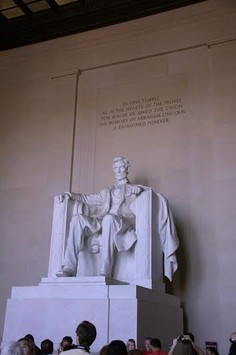
The Lincoln Memorial bears a neoclassical design with large columns and marble. It is reminiscent of the Parthenon in Athens, considered the cradle of democracy.
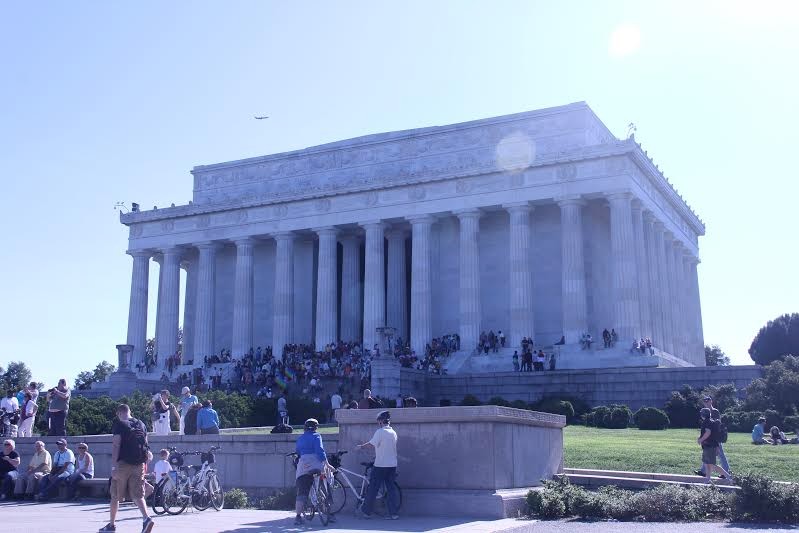
The Piccirilli Brothers, who carved the statue under the guidance of architect Daniel Chester French, stand at the unfinished statue of President Lincoln.
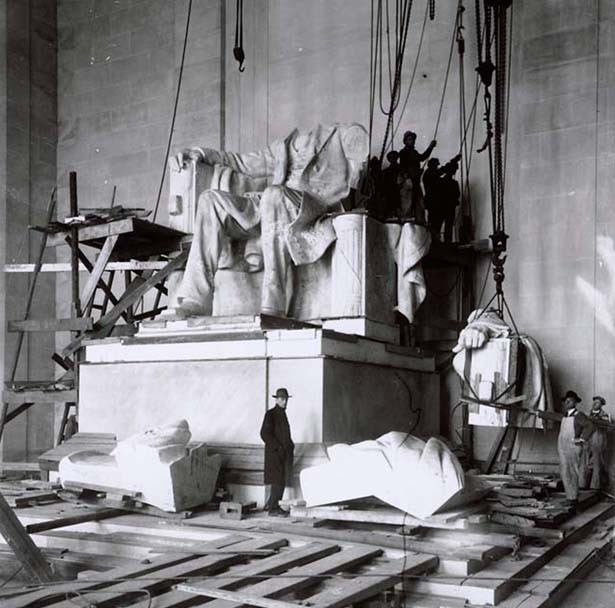
Marian Anderson singing on the steps of the Lincoln Memorial in 1939.
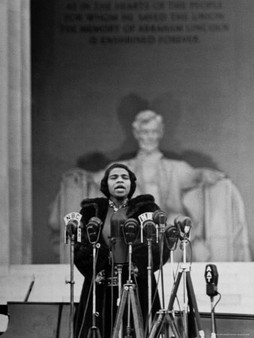
Photo of Rev. Martin Luther King Jr. during his "I Have a Dream" speech in 1963.
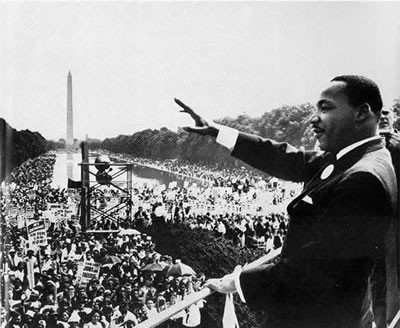
Backstory and Context
Text-to-speech Audio
The Lincoln Memorial was modeled after the Parthenon in Athens, Greece. It contains three chambers; the central chamber which contains an imposing statue of Lincoln that towers over visitors at 19 feet tall. Designed by Daniel Chester French and carved by the Piccirilli Brothers, this representation of the 16th president overlooks the 2,029 foot long Reflecting Pool and faces the Washington Monument. The memorial's left and right chambers contain engraved copies of the Gettysburg Address and Lincoln’s Second Inaugural Address. Each address is accompanied by a mural painted by Jules Guerin. The Gettysburg Address mural, entitled "Emancipation," represents the values of freedom, liberty, justice, law, and immortality. In the central panel, the Angel of Truth releases slaves from bondage. The Second Inaugural Address mural, "Unity," depicts the Angel of Truth bringing together the North and South and protecting the values of science, the arts, the future, and fraternity. Other architectural details of the Lincoln Memorial were designed by Ernest C. Barstow and Evelyn Beatrice Longman. Visitors to the Lincoln Memorial are greeted by an inscription by Royal Cortissoz that captures the essence of President Lincoln:
“In this temple, as in the hearts of the people for whom he saved the Union, the memory of Abraham Lincoln is enshrined forever.”
On the outside of the Lincoln Memorial building, there are 36 columnns which represent the states that Lincoln was fighting to unite. Engraved around outside of the monument are the names of the 48 states in the Union at the time of the monument’s completion (excluding Hawaii and Alaska which were added in a plaque at the foot of the monument in 1959).
This historic monument was dedicated by former President Taft on May 30, 1922. This dedication was meant to serve as a reminder of Lincoln’s work towards equality, freedom, and national unity, yet, although the ideals of a united nation prevailed, the truth of racial equality was not fully realized. Much of the crowd at the ceremony was segregated, a fact that disturbed many who were there. A rededication ceremony occurred in 2009 on the bicentennial of Lincoln’s birth; it was partially meant to right the wrong of the first dedication and to remind the people again of the importance of fighting for equality.
Since its 1922 opening, the site has been the backdrop for many demonstrations on behalf of civil rights. Most famous among these is the March on Washington for Jobs and Freedom of 1963. This march saw 200,000 people come together to demand equality for all races; it was the day of Martin Luther King Jr.’s world renowned “I Have a Dream” speech. Another rally, often known as the Prayer Pilgrimage of 1957, saw 25,000 people come together to protest the slow progression of desegregation and the economic plight of African Americans. This protest was a prototype for the march to be led by King years later. The steps of the monument also saw singer Marian Anderson perform a concert on Easter Sunday in 1939. It was a nationally funded event sponsored by the Roosevelt administration and was heard across the country via radio.
Today, the Lincoln Memorial is a symbol of equality and of the struggles we have overcome in fighting for civil rights. It honors the president who strove to unite a torn nation and who desired to see equality reign. Visitors from all over the world flood the steps of this monument every day to see the memorial to one of our nation’s greatest presidents.
Sources
http://www.history.com/news/the-lincoln-memorials-bizarre-rejected-designs
National Park Service. "History and Culture." National Mall and Memorial Parks. Last updated: August 16, 2017. Accessed November 2017. https://www.nps.gov/linc/learn/historyculture/index.htm
National Park Service. "Lincoln Memorial Builders." National Mall and Memorial Parks. Last updated: July 31, 2017. Accessed November 2017. https://www.nps.gov/linc/learn/historyculture/lincoln-memorial-design-individuals.htm
National Park Service. "Lincoln Memorial." National Register of Historic Places Inventory-Nomination Form. Washington, D.C.: National Park Service, Department of the Interior, 1966. Accessed November 2017. https://npgallery.nps.gov/NRHP/GetAsset/ac50ccbf-a500-412c-a7b4-79fe21256e68?branding=NRHP
